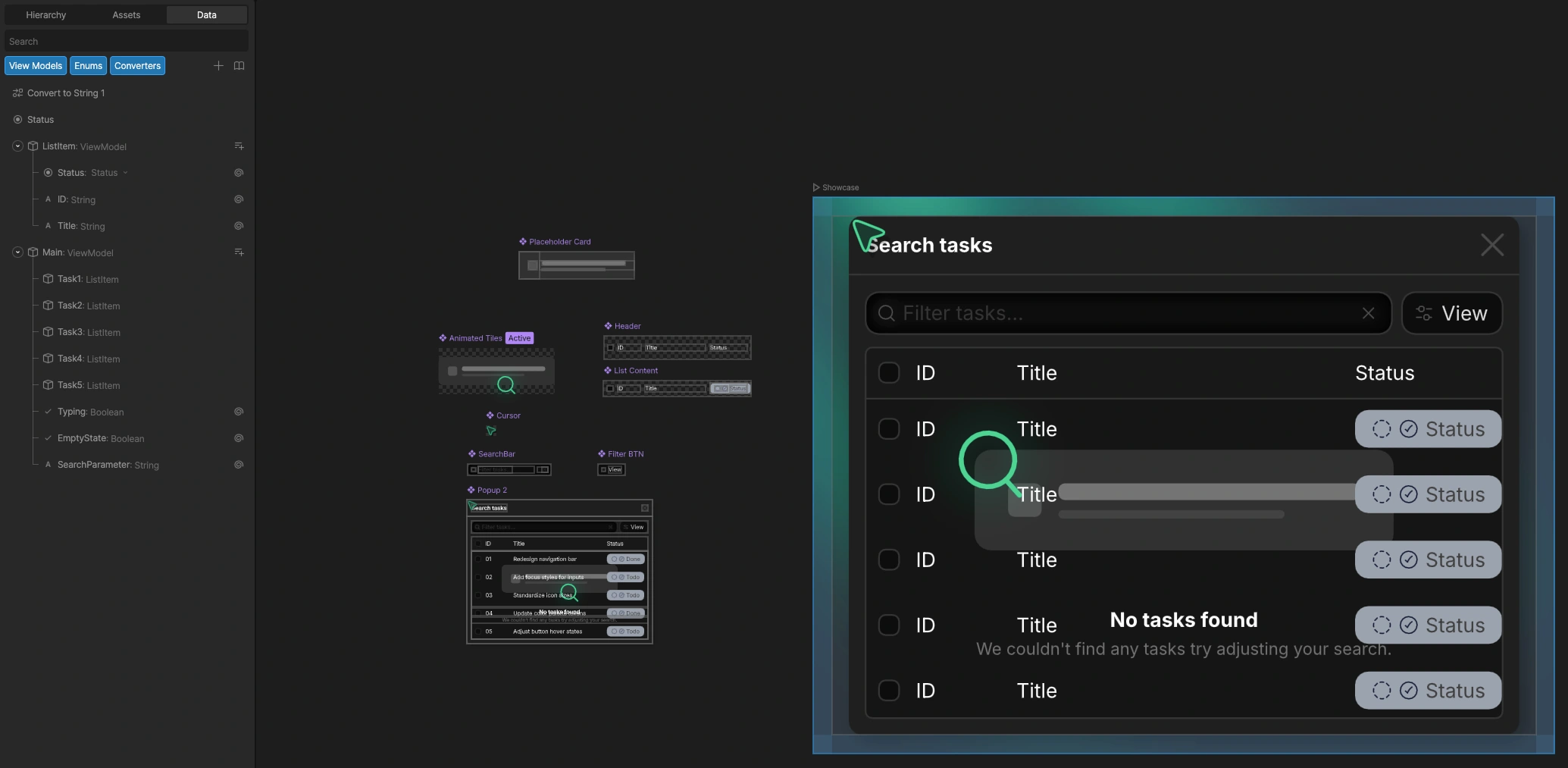Built with Rive
Rive empty state
Turning empty screen into branded experiences
How often do you search for something specific only to be met with… nothing?
When you start a new project, you’re often looking at a blank canvas: no files, no content, everything needs to be created from scratch.
In both cases, the default experience is usually the same: a plain “No files found” message. Functional, but not exactly inspiring.
So how can we make that moment a more pleasant experience?
Rive is a perfect fit here. You can introduce a small, context appropriate animation to bring the empty state to life. For example, a playful “missing file” animation for an empty folder, or a quiet “all caught up” visual when there are no notifications left.
It’s also worth remembering: an empty state can carry different meanings. Sometimes it’s a positive signal (“no issues found”), other times it’s a negative one (“no results found”). The tone of your design should reflect that.
When you pair a thoughtful visual with clear UX writing and a well-placed call to action, you turn an empty state into a meaningful part of the experience and a great place to showcase your brand’s personality.

The animation setup in Rive
Like this project
Posted Aug 14, 2025
A search with no results? Turn empty search screens into branded moments with fun Rive-powered micro interactions.
Likes
2
Views
11
Timeline
Aug 1, 2025 - Aug 31, 2025



